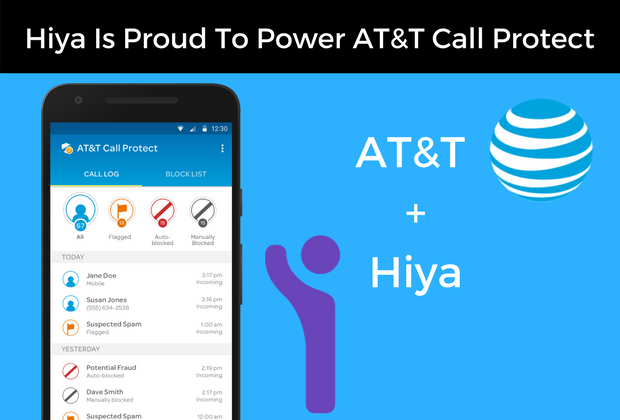
As unwanted call traffic levels reach new highs, the need for effective call protection services is greater than ever. Hiya is proud to power a solution for AT&T.
These unwanted calls can be primarily spam/telemarketing and scam/fraud.
- Spam/telemarketing calls are mass-broadcasted calls that go to thousands of people
- Scam/fraud calls attempt to elicit personal information from individuals, typically to obtain money.
When it comes to protecting their customers, AT&T’s free app, AT&T Call Protect, is saving customers from unwanted calls.
In general, call protection services have two key attributes: identification and accuracy. It is important that each attribute balance the other.
- Identification refers to how many spam or scam numbers get flagged. When a call protection service labels calls aggressively, customers of the service may not receive as many unwanted calls to their devices. When they do, the calls may be labeled with a warning, such as “sales call.” But customers of such services may not receive legitimate calls that are inadvertently blocked. Likewise, they may receive calls that are mislabeled as spam or scam.
- Accuracy is the ability to recognize correctly when a number is not a spammer or scammer. The consequences of getting accuracy wrong can be harmful. If a number is incorrectly blocked, important calls might be missed and innocent businesses could suffer when they are unable to reach their customers.
The challenge for analytics services like ours is that identification and accuracy can be at direct odds with each other. While the easiest way to achieve strong spam/scam identification is by liberally declaring numbers spam or scam, this leads to poor accuracy, false labeling of innocent numbers and potentially important calls going unanswered. For example, since the majority of robocalling activity happens via spoofed phone calls, flagging a spam call or blocking a scam call isn’t the end of the matter. In a spoofed call, the number shown on caller ID isn’t the actual number creating the call. Instead, it is provided by the spammer or scammer directly. Scammers will often spoof a random number for only a few days – or even a few hours – before abandoning it.
Hiya is able to balance identification and accuracy on AT&T Call Protect thanks in part to the AT&T network itself. Hiya’s service operates on a per-call basis, not a per-phone number basis. Each individual phone call is assessed for spam/scam potential, regardless of the number. The service is quick to observe the rise in spam or scam traffic during spoofing, and equally quick to absolve the number when the scammer departs.
AT&T Call Protect powered by Hiya gives customers peace of mind that they are receiving the best in the industry when it comes to both identification and accuracy. Consumers win and scammers lose. Hiya is proud to have among the highest customer reviews (over 4.7-star rating in the App Store). We’re proud to stand by our customers so they can maintain trust in the fundamental aspect of their mobile device: making and receiving calls.



